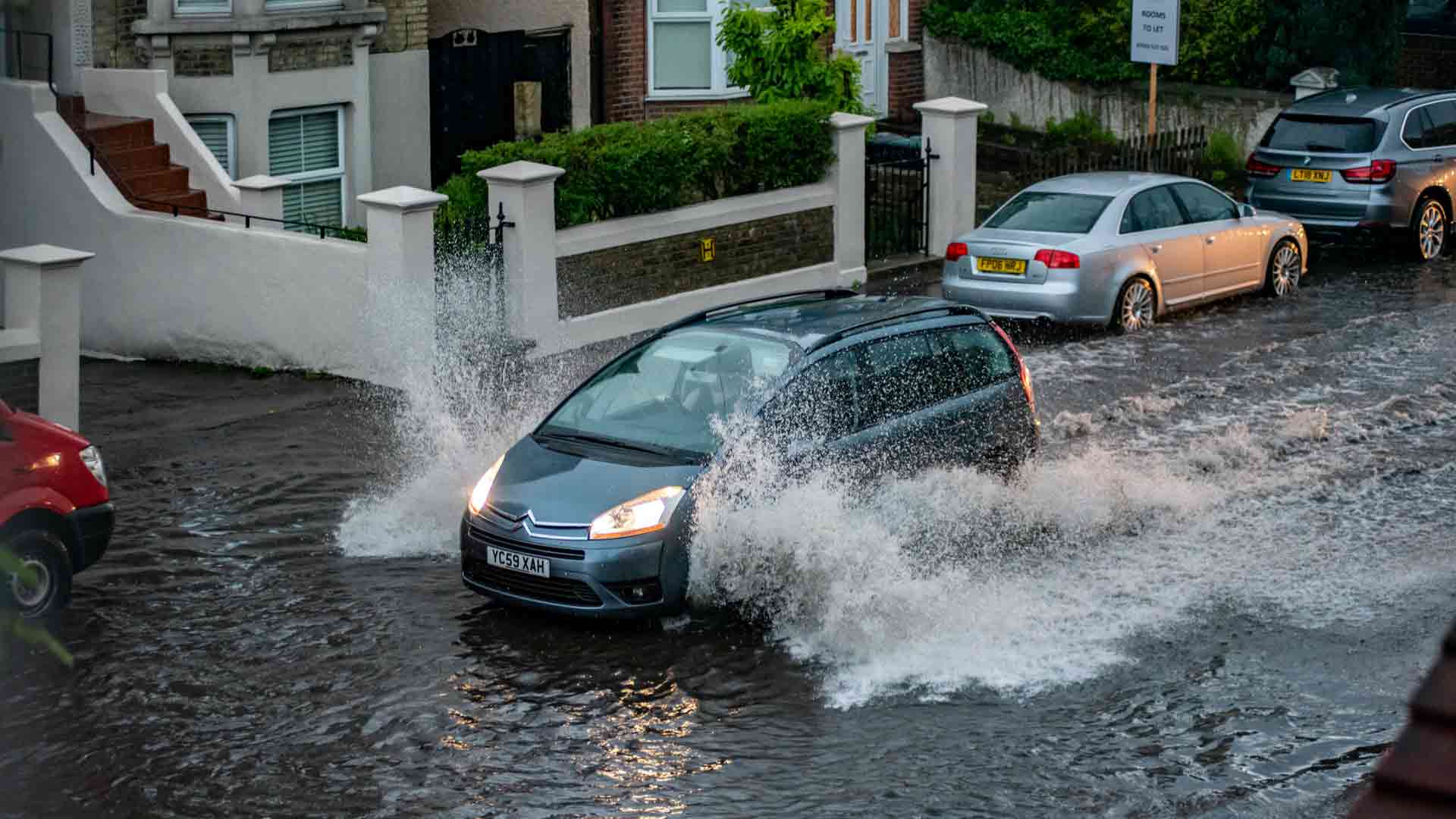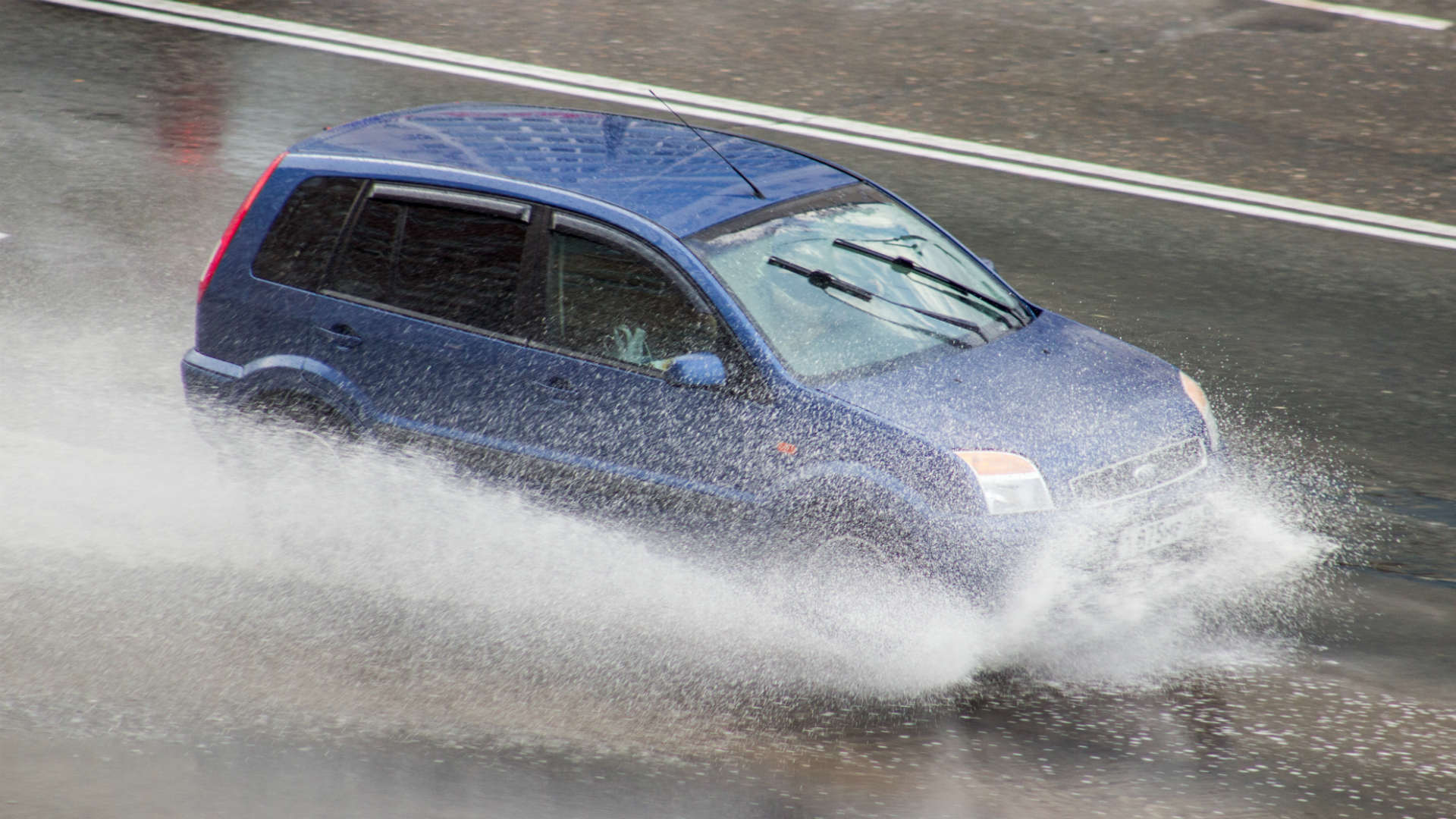
Heavy rain is a staple of British weather, but it poses its own challenges for drivers – potentially increasing the risk of accidents.
Driving in wet weather, stopping distances are much longer than on dry roads. This is because your car’s tyres have less grip.
The ‘two-second rule’ for leaving a gap to the car in front no longer applies. Instead, the Highway Code recommends drivers allow at least twice the stopping distance on wet roads. Further advice includes:
- If the steering becomes unresponsive, it probably means water is preventing the tyres from gripping the road. This is called aquaplaning. Ease off the accelerator and slow down gradually, maintaining a good grip of the steering wheel. The car will regain its grip as the water clears.
- Rain and spray from vehicles may make it difficult to see and be seen.
- Spilt diesel may make the surface very slippery, especially after a prolonged period of dry weather.
- Take extra care around pedestrians, cyclists, motorcyclists and horse riders.
Richard Gladman of IAM RoadSmart said: “With the British weather the way it is, we should all be well practised at driving in the rain. Keeping your car maintained and the rubber (tyres and wiper blades) in good condition will help you stay safe.
“We have seen that standing water and floods are becoming more commonplace, so take extra care and, if possible, avoid driving through standing water. If you’re in any doubt about the depth or surface underneath a flood, then it’s best not to take any chances.”
More tips for driving in the rain

IAM RoadSmart has the following additional advice for driving in the rain, including what to do in a flood.
- If you need windscreen wipers, you need your headlights. Automatic lights may not activate in bad weather, so make a sensible decision about whether these need to be turned on. Daytime running lights are not suitable in heavy rain, especially as your rear lights may not be illuminated.
- Keep your windscreen clean, the wipers in good condition, and the washer jets positioned correctly.
- If you approach a flood, ask yourself some questions. For example:
- Can you find an alternative route? If the standing water is more than six inches deep, avoid driving through it. If in doubt, stay out.
- What caused the flood? If it was a burst water main, the road surface may be completely broken up.
- Are other vehicles able to get through? If not, find an alternative route.
- Is the water fast-flowing? If it is, do not drive through the flood – there’s a danger your car could be swept away.
- If you drive through standing water, do so slowly. Press lightly on the clutch and add gentle pressure on the accelerator to increase engine revs. Do so without increasing your speed to prevent water from entering the exhaust pipe. When you have passed through the flood, test your brakes to make sure they are dry and operating correctly.
- Remember, you could receive a fixed penalty and three points on your licence for accidentally splashing pedestrians. Do it deliberately and you could receive a court order and a fine.
ALSO READ:
Which lane should you use on an unmarked roundabout?
What is checked in a car MOT test?
What is ICEing and why does it infuriate electric car owners?